31 Days, 31 Lists: 2023 Great Board Books
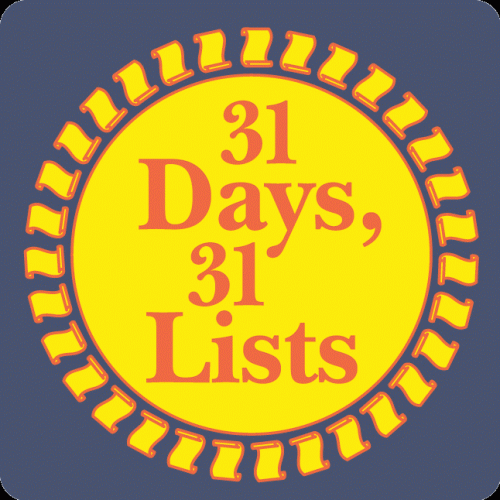
I know you may not believe it, but it is SUCH a relief whenever I finally begin my 31 Days, 31 Lists process. I prepare books all year long, and the lists just build and build and build, waiting until I can finally release them. And now, at last! I’m able to share with you a slew of great (I will never say “best” because aside from these being subjective, I can’t read everything) books published in the current year.
As with every year, I tend to split my Board Books list into parts. In the first part, you’ll find the (much shorter) list of board books appropriate for babies. As strange as it may seem, a large chunk of board books produced are better suited for toddlers and preschoolers. I’ll provide a list for them as well, but I like to separate them out from the babies list. And then, this year, I found enough interesting board book reprints/adapted picture books (trust me, making good ones is an art) to make a third section for the very first time. They’re all below. Dip and in and out as you prefer. And if there’s a book you particularly enjoyed this year and you don’t see it on the list, let me know in the comments! I love additional suggestions on all of these lists.
ADVERTISEMENT
ADVERTISEMENT
Here’s the PDF of this year’s Board Book List, if you’re interested in downloading it in a nice and easy format.
Additionally, in case you need more suggestions, be sure to check out my previous years’ board book lists:
2023 Board Books for Babies
The Babies and Bunnies Book by John Schindel and Molly Woodward
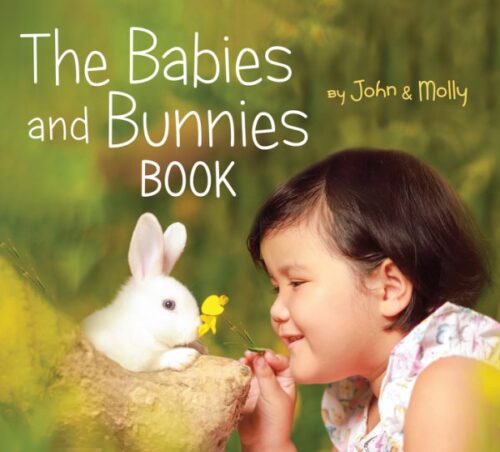
To be perfectly frank, I admire the shamelessness of this series. Already John & Molly figured out an essential secret to board books: Fill ‘em with photos of babies and cute fuzzy animals. I mean, it sounds obvious when I say it aloud but nobody else has ever really just gotten down to the bare essentials the same way that these folks have. They already produced The Babies and Doggies Book to say nothing of The Babies and Kitties Book as well. Now they go all bunny, which is smart on a couple levels. Unlike doggies and kitties, bunny board books sell particularly well around Easter time, even if they’ve nothing to do with the holiday directly. Of the aforementioned three titles, I suspect that this one will sell far longer to far more people. As for the book itself, the babies and bunnies are just amazing. Even if they’re not in the same shot or frame, they’re paired in such a way where they look like they could potentially be in the same general area. What the baby does, the bunny does, and vice versa. Just try to resist, you jaded suckers. It won’t work. Babies & Bunnies 4-Evah.
DJ Baby by D.J. Burton, ill. Andy J. Pizza
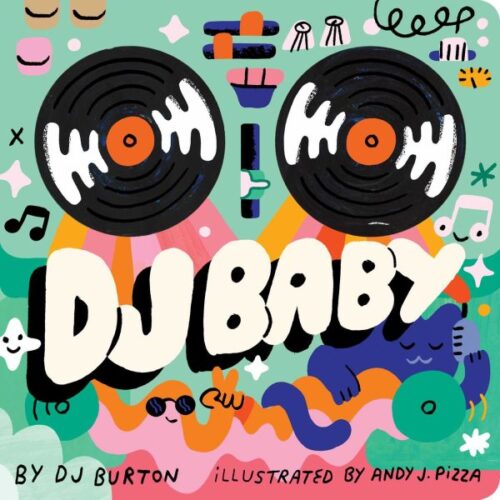
While some may say that babies do not need to learn how to do a record scratch, I for one disagree heartily! These are important skills and, happily, we finally have an interactive board book to go along with this need. Now if I were handing out awards for the most creatively constructed board books of the year, DJ Baby hands down would be the winner. Two records poke through the entire book so that even on the cover you have the ability to spin them either clockwise or counter-clockwise. The text, meanwhile, is bouncy and rhyming. “Hey, DJ Baby! Pump up the jammies! Spin those records! Jump up, little lambies!” Animals fill the dance floor as the reader spins those records. So entranced was I with the records that I completely missed some of the other interactive elements, like the lights you can raise and lower. A more blatant pitch to Gen X / Millennial parents I’ve yet to see, and I couldn’t care less. I would have loved to have been a fly on the wall when they pitched this to the Simon & Schuster sales team. Utterly original. And if you want to watch my TikTok on it, you can do so here.
Eyes, Ears, Nose, and Toes by Sophie Aggett

Yeah, I admit it. I’m pretty easy. You slap some big old baby faces in a board book and then add an element like soft felt flaps? Instant inclusion on this list! What’s funny is that so few board book creators have ever thought to do this. There are only so many different elements you can include in books for the youngest of young readers, and “faces” and “felt flaps” come up all the time. Yet for the first time that I’ve ever seen, here they are together at last. The photographs are entirely black and white, which is an interesting choice. I don’t know enough about baby eyeballs to know if that counts as “high contrast” enough for them, but certainly the lovely flaps are an excellent touch. Plus, someone appears to have worked hard to make sure that the cutouts on the felt reveal the obligatory body parts you’re looking for. Consider this for toddlers too then!
Global Baby Grandparents by Maya Ajmera

I’m sorry, but do I even have to make a write-up for this book? If you know any of the “Global Baby” books in the series then you know they pretty much sells themselves. The only mystery surrounding this particular title comes in wondering how they held off from doing a grandparents book before now. As per usual you get these truly gorgeous faces of babies from all around the world, only this time with their grandparents. Earlier this year an article about Jon Klassen’s The Skull bemoaned how many picture books are about grandparents in a given year (since it feels like an easy grab for sentimental grandparent cash). I would have you remember, though, that no matter the subject matter, there are always a few truly amazing books in the bunch, well worth discovering. And with its brightly colored, clear-as-crystal, beautiful photographs, this is one of the few.
Good Night, Baby by Staphani Stilwell
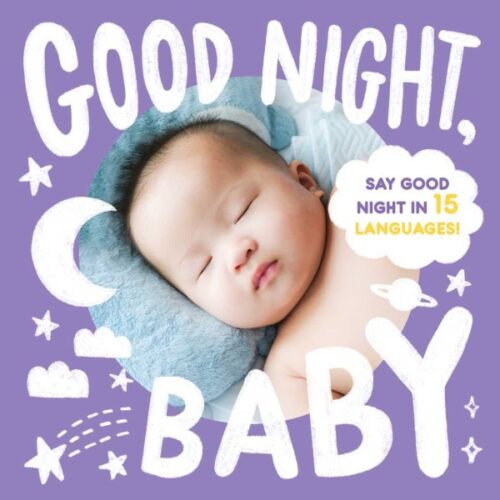
Okay, I’m gonna let you in on my sneaky, underhanded little plan involving these board books. Are you ready? See, I figure that if I feature enough of them with this great big beautiful photographs of baby faces, and give them enough attention on these lists, then more and more publishers will create them and soon the market will be flooded with titles that babies actually enjoy! MUAHA-HA-HA-HA-HA!!! Mind you, I’m no evil genius, and these books are probably doing as well as they are right now due to their inherent and obvious charms rather than anything on my part. This particular title is a companion to a book on this list coming next called Hello, Baby. Like that book they’ve found fifteen adorable babies and they say good night to them (in this case) in fifteen different languages. I was very gratified to see not simply a range of races and skin tones but also at least one Down syndrome baby as well. A pronunciation guide exists at the end along with visuals for the sign language. Perfect for baby and intensely interested and engaged parent alike.
Hello, Baby by Stephanie Stilwell

This is the book I was just talking about. With the directive to “Say hello in 15 languages” this is a book chock full of baby faces from a wide range of skin tones and ethnicities. Nice too that as you say hello to each baby in a different language, they’ve a wide range of names as well. Languages include English, Chinese (which is listed as “Simplified” though I’m not certain what that means), French, Korean, Spanish, Swahili, Arabic, Russian, German, Hindi, Navajo, American Sign Language, Portuguese, Japanese, and Italian. Extra points to ending with a baby with glasses because, as we all know, babies with glasses are the cutest babies of them all.
Hello Baby Penguin! by Beverly Rose
Hello Baby Sloth! by Beverly Rose

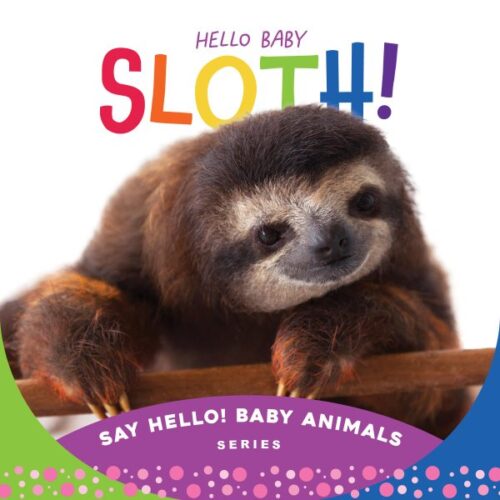
Oh yeah. I see how it is. You think that just because you’ve filled a board book with delightful, squishable, cute-as-a-button baby animals, I’m just gonna roll over and talk that book up?
You would be correct then.
Of course, not all board books featuring photographs are created equal. This uses the usual Shutterstock images we’ve seen so many times before but I gotta give a shout out to the design team. A pity the designer isn’t credited on the back of the books yet, honestly. They should get some credit for how the images, text, and colors work so well together, page to page to page. Each book ends with a small child at the very end, and that’s just so darned adorable I can hardly stand it. So yes. I may not be hard to please when it comes to baby sloths or penguins, but it helps when the quality of the materials is so good.
Friend by Gavin Bishop
Look: A Tummy Time Book by Gavin Bishop
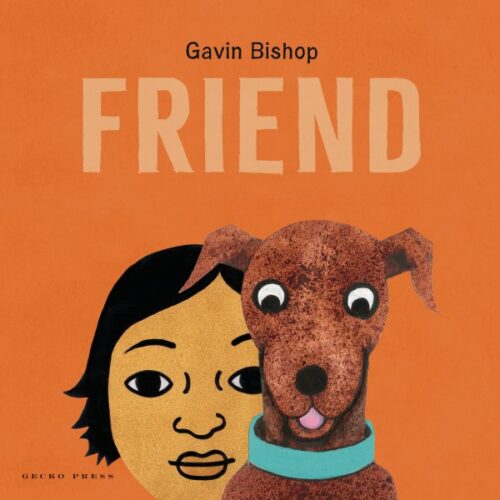

YUSSS!!! Oh lord, people, why is something like this so rare? All I want is for accomplished picture book illustrators to hone their talents to the board book format and THEN be paired with those books that will be most useful to children. I’m talking accordion books/high contrast/lift-the-flaps/you name it. Gavin Bishop is of Maori descent (Ngāti Pukeko, Ngāti Awa, Ngāti Mahuta, Tainui) and is a friggin’ New Zealand national treasure. He’s also been making books for kids for decades upon decades. LOOK is a particular delight with faces on one side of the accordion pull-out pages, and objects on the other. Meanwhile FRIEND goes through a range of different emotions with a little dog as your avatar. More of this please!
Look, It’s Hoot Hoot Owl by Camilla Reid, ill. Clare Youngs
Look, It’s Moo Moo Cow by Camilla Reid, ill. Clare Youngs
Look, It’s Roar Roar Lion by Camilla Reid, ill. Clare Youngs
Look, It’s Woof Woof Dog by Camilla Reid, ill. Clare Youngs


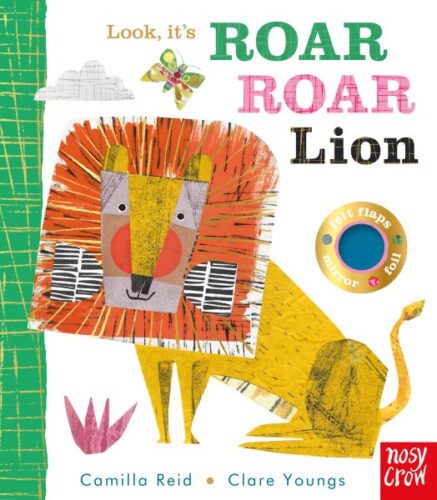

It’s not as though I’ve never seen foil used on a board book before. Of course I have! But until now I don’t think I’d seen it used as beautifully and artistically as it has by Clare Youngs. By all immediate appearances these aren’t all that different from your average Nosy Crow lift-the-flap/touch-and-feel board books. But once you get inside, you’ll find these enormously engaging shiny patterns on the animals. I think it’s the use of foil in patterns (and delicate ones at that) that really blew me away. It just sort of elevates everything a bit. Sort of makes the books just a bit more interesting, even as they walk the usual paces. So for primo use of foil (and some thoroughly charming animals to boot) this is the series to watch.
Look Touch Learn: Sea by Charlotte Archer
Look Touch Learn: Sky by Charlotte Archer
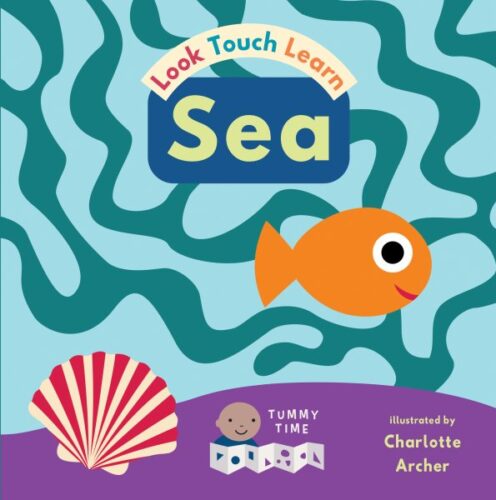

Now that’s more like it, people! When I say I want more tummy time accordion books, I don’t just want the occasional one here and there. I want a whole friggin’ series of the dang things. The publisher Child’s Play knows this. They went so far as to collaborate with The Sussex Baby Lab to create these books that are able to work both as regular books read on a lap and also as accordion books you’d set up around your child during tummy time (though, to be honest, in those early days when they don’t move much I also would put them on the edges of the crib). Some of the elements will actually fare better in the books’ accordion state, like the hanging moon or the wiggly slippery fish. There are tactile elements and lots of good contrasting colors. Some elements are shiny and some are bumpy and both titles are excellent additions to any child’s accordion collection.
My First Baby Signs: Over 40 Fundamental Signs for You and Baby by Lee Ann Steyns, ill. Julia Seal
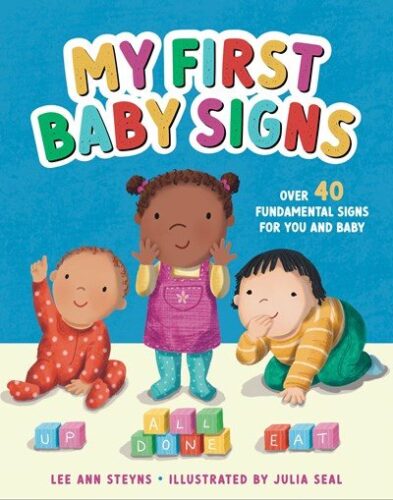
I’m placing this in the board book category in spite of the fact that technically the pages are not those thick cardboard-like surfaces we’ve grown so accustomed to over the years. Even so, the pages are very sturdy and the cover of a nice chewy, cushiony quality. When my kids were babies I found that though I wanted to find books on doing signs with them, the pickings were few and far between. The books I ended up relying on the most were, in fact, board books! Often these would contain photographs of real babies performing the signs. What sets this Steyns/Seal collaboration apart is not simply the ample additional information for parents at the start, but also tips on how to begin signing with your baby. The book is even separated into Top 10 Starter Signs, for when you’re first teaching, and the more complete listing of Daily Signs. There is even (and this is heavenly) a friggin’ Index of Signs at the back so that you can find the ones you need more quickly. The fact that it’s illustrated rather than contains photographs is no fluke. Often illustrations can be much clearer in showing parents how to perform one sign or another. I gotta say, this may be the strongest baby sign language board book I’ve ever encountered.
Reading Time by Mama Makes Books

Man. Just my luck. I don’t have any babies anymore and then here come publishers like Red Comet Press producing these high-contrast fold-out books with patterns and mirrors and everything! I remember all too well using these accordion books with my own babies when they were young. I loved encircling them with the bright, easy-to-see images. I’ve already waxed eloquent in the past over Tummy Time (which is by the same folks and came out back in 2022). Now they’re doubling down with Reading Time and I am here for it! It’s really not all that different from the last book, but who cares? When you’ve hit on the magic formula then the only thing left to do is repeat, repeat, repeat. Besides, you can never have enough accordion books in your life. Extra points to this one for finding a clever way to fold up (and stay closed!) on its own.
2023 Board Books for Toddlers and Preschoolers
Alma and Her Family / Alma y Su Familia by Juana Martinez-Neal
Alma Head to Toe / Alma de Pies a Cabeza by Juana Martinez-Neal +(BB)

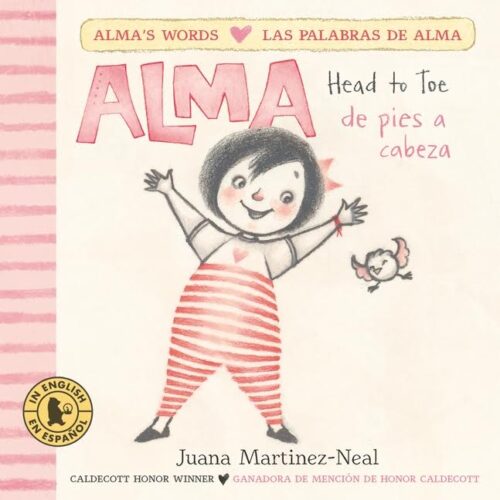
The world always needs a little more Alma. The Caldecott Honor winning character (from Alma and How She Got Her Name) returns in this new bilingual board book series. And considering how desperate the public is for bilingual books for younger readers, finding not just something bilingual in a board book form AND as high quality as Juana’s art and text, that’s pretty remarkable. Each book covers some fairly basic information. The one about her family goes through her family members one by one (including the world’s most patient abuelo). Extra points to Juana for also depicting the knitting her great-aunt does with great accuracy (no upside down knitting needles here!). Head to Toe, meanwhile, goes through bodyparts and senses. Dang these are cute. You may wish to stock up.
AlphaBot by Vicky Fang

Fine. I’m a sucker for the mix and match books. So sue. This is actually a STEM board book/mix and match title, which puts it in the company of . . . no other books out there. So it’s definitely on the older side, but these robotic terms aren’t pushy at all. They just gently suggest themselves. As you flip through your robot’s head, middle, and lower extremities, on the right hand side is what they look like and on the left hand side are little vocabulary terms like “Android”, “LED”, or “Neural Network” (which I kind of love because in that case you’ve just given your robot some freaky deaky brain legs). As you flip through with your kid you can just say the terms and hope that in some small corner of their brains the terms will lodge there. It’s science done gentle and fun, and isn’t that what we’re all hoping for with these books?
Baby Stegosaurus by Julie Abery, ill. Gavin Scott
Baby T.Rex by Julie Abery, ill. Gavin Scott


You might think that blatant plays for dino-loving toddlers is a cheap move on the part of board book creators. You might be right. But as someone who spent the better part of 2023 reading through egregious, and I’m talking EGREGIOUS, dino-related board books, please believe me when I identify a couple that are actually worth your time and money. Both of these little board books have the distinction of packing in a serious story in their scant 18 pages. Baby Stegosaurus focuses on an exploding volcano and a baby stego’s break for survival. Baby T.Rex, in contrast, is about saving a hitherto unknown sibling’s egg from destruction. Fairly heady topics for board books, are they not? And here’s the kicker: they rhyme. I kid you not! They rhyme! And they rhyme well at that! “Baby loves leaves / Rip, chew, and gulp! / Crunch a few pebbles. / Pummel the pulp.” If you thought you’d ever see the phrase “Pummel the pulp” in a board book before then I commend you, but generally speaking this is a rare rhyme for a rare series. Rethink your dino prejudices. Come to this delightful series from Amicus Ink.
Balloon Art ABC by Masayoshi Matsumoto

Is this book a gimmick? Maybe. Do I care even one jot? I. Do. Not. There is balloon art in this world and then there is Balloon Art with a capital “B” and a capital “A”. Masayoshi Matsumoto, we are told, is a “Master Balloon Artist” and I actually looked him up after I read this book because what he’s managing to accomplish here is so incredible. You can get a sense of that from his Instagram page. Don’t be surprised if you’re unable to click away. In this book, it plays by the usual ABC rules, but impressively it never cheats. You’ll note that the title isn’t promising animal balloons all the way through, so Matsumoto just makes something for every letter. This is the book you hand the parent who needs a little support on reading the same book over and over again. With this title, you could read it 30 times and still find it a pleasure to the eye.
A Beautiful House for Birds by Grace Lin

A math board book sounds, on the outset, impossible. Or, at the very least, improbable. That is, until you realize that math has roots in some of the fundamental activities kids play with all the time. It’s always pleased me inordinately that Grace Lin gets this fact. Over the years she’s been contributing to Charlesbridge’s “Story-Telling Math” board book series, highlighting a variety of different concepts. I like some more than others, and I happen to like this one very much. The concept being highlighted here is “Patterns”. I love how such a simple storyline about painting pink and green lines in succession on a birdhouse roof, interrupted by an unexpected blue line, leads the young heroine to realize that this mistake can actually become a part of the pattern too. Exceedingly clever how Lin has figured out how to make something this smart for such a young audience. The words are never too complicated, and it makes a great point not simply about pattern recognition but also extending already existing patterns into something new.
Bruno Builder Bakes Bread by Nelleke Verhoeff
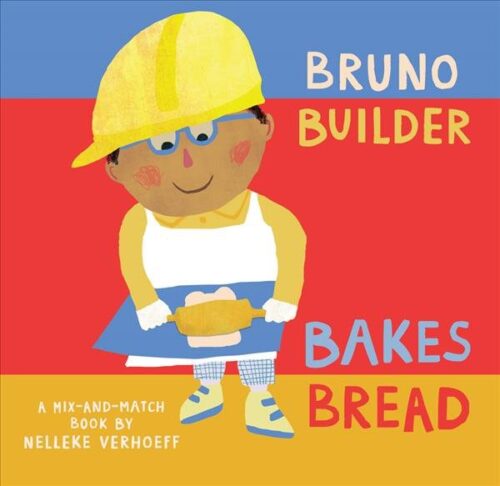
Subversive. Definition: seeking or intended to subvert an established system or institution.
Can a board book be subversive? I don’t see why not. Certainly Verhoeff’s been that way before with 2021’s Red Hat, Pink Books. Now she’s created a book that acts as a perfect complement to that one. On the top half of this mix-and-match book you are presented with the people. On the bottom half, their activities. But that said, gender expectations are completely upended time and again, as you match masculine, feminine, and other genders, ethnicities, and races together in different ways. And by god, if Farah the flight attendant wants to fight a fire (which is one of the examples in this book), I say we let her! A book that feeds into a child’s creativity as much as it provides a bit of fun.
By Myself by Sumana Seeboruth, ill. Maribel Castells

We’ve been there, kid. We’ve all been there. Only a reader with a heart of stone would remain unmoved by this child’s conundrum. Independent little two-year-olds want to do everything themselves but while the will is there, the flesh is lacking in experience (or, for that matter, reliable hand-eye coordination). In this story a toddler is starting the day with her big sister (who casually sports a cochlear implant). When the big (incredibly patient) sister tries to help her little sib, she is met with an indignant “No no, no! I can do it. Go, go, go!” Things . . . do not go well. There’s humor here for the older readers and some serious identification for the younger. In the end, each girl helps the other in some way, which gives the book a feeling of fairness that I didn’t really expect from a title this young. With delightful art from Castells (I may have to rate my favorite covers of the year at some point) this is one title parents won’t mind reading a couple hundred times or more.
Copy That, Copy Cat! Inventions Inspired by Animals by Katrina Tangen, ill. Giulia Orecchia

Okay, once more we dive into what can only really be considered a nonfiction board book. Sometimes these feel more like unholy unions than anything else. In this particular case the creators have cleverly managed to fulfill both the desires of their young readers (by having them guess what each technological innovation is) and that of their STEM-loving parents. The book kind of reminded me of the old Mac Barnett book Guess Again! in that it has fun fooling the reader into guessing the wrong rhymes with each invention. I suspect this would actually make for a fun readaloud for preschoolers. You do lift flaps, but be prepared for some pretty in-depth and sometimes complex explanations of scientific principles when you do (bet you weren’t expecting to hear the sentence, “The faster air has lower pressure, so the higher pressure underneath pushes up and lifts the wing,” in a board book, were you?). Ambitious but also really fun.
Don’t Mix Up My Farm! by Rosamund Lloyd, ill. Spencer Wilson
Don’t Mix Up My Ocean! by Rosamund Lloyd, ill. Spencer Wilson
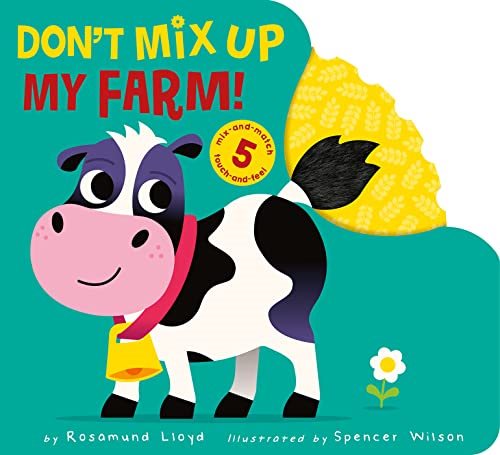
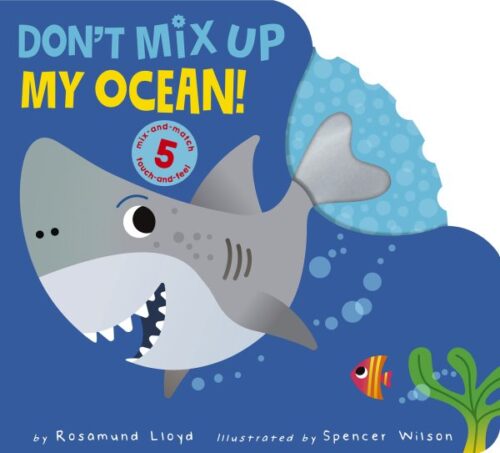
You do realize, of course, that these reviews that I write have everything to do with the mood I happen to be in on the given day that I encounter them. For example, I can only assume that I was in a particularly bleak, dismissive mood when I first encountered the Lloyd/Wilson board books Don’t Mix Up My Dinosaur! and Don’t Mix Up My Puppy! Perfectly nice books but I wasn’t feeling ‘em that day. Fast forward a couple months and you find Don’t Mix Up My Farm! and Don’t Mix Up My Ocean! have hit the market and suddenly I’m quite entranced by them. It’s not that the art and text are particularly unique. Rather, it suddenly occurred to me that I’d never really encountered a board book that combined touch-and-feel aspects with the spinning gear that lets the reader switch around a character’s body parts before. Or, as the books describe themselves, “mix-and-match” and “touch-and-feel” together at last. The end result is actually quite clever. Here I am, a 45-year-old woman sitting at the lunch table of her library workplace, systematically trying to match up the correct tails on the correct animals. It’s not hard, but I think parents will appreciate the work that goes into it.
Flora and Friends ABC by Molly Idle
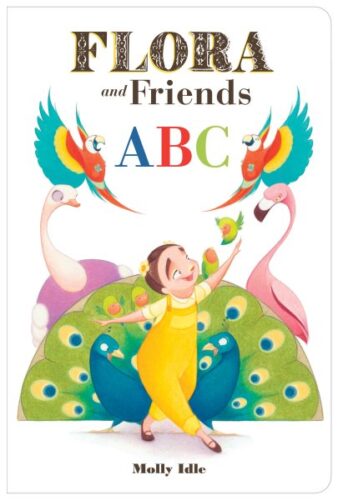
Molly Idle has GOT to stop being as good at her job as she is. Seriously, this is beginning to become a problem. To the best of my knowledge, there are only three Caldecott Honorees that regularly pour their hearts and souls into their original board book creations. One you’ve already seen in Juana Martinez-Neal and her little Alma books. The second is Aaron Becker, who didn’t have a board book out this year, but utterly decimates the competition when he does produce. And the third, as you can clearly see, is Molly Idle. Because when this woman decides that she wants to create an ABC board book, she doesn’t go halfsies on it. Oh no. Her full avian abecedarian tendencies are on FULL display with this magnificent production. Flora and the Flamingo may have won a Caldecott but all that inventiveness is replicated in full in this book. And there are so many different kinds of birds on these pages! I loved finally getting to see her do an ostrich (they’re kinda my thing) as well as a slew of other beautifully rounded babies. I only keep the occasional board book that comes my way, but this one? This is one of the few that I’m hanging onto. The best!
Frog by Maggie Li
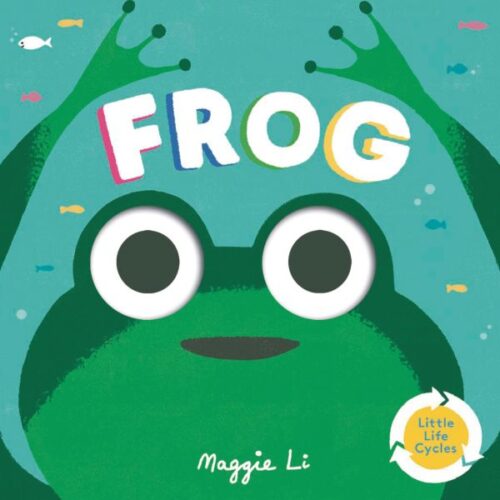
STEM board books sometimes give me mild headaches. I don’t object to them in theory, it’s just that most of the time they’re so clearly aimed at adult parents rather than children. Still, I like giving them all an equal shot. Who knows? Maybe one of them will be brilliant. Well, my persistence has paid off. Frog is one of four books in the “Little Life Cycles” series (accompanying Seed, Drip, and Bug) but it’s my favorite of the bunch. Maybe because author/artist Maggie Li is able to cleverly turn the big bulbous eyes of the titular frog into eggs AND tadpoles AND (in time) a frog again. It’s a cut-out technique accompanied by a text that trends just a tiny bit older than the ankle biter set. This is the kind of book that’s ideal for the preschool crowd, I’d say. With its tactile circular cut-outs and clever rendition of the life cycle, this isn’t just one of the better STEM board books I’ve seen, it’s one of the better life cycle of the frog books I’ve encountered for young readers ever!
How Are You? by Édouard Manceau, translated by Wendeline A. Hardenberg
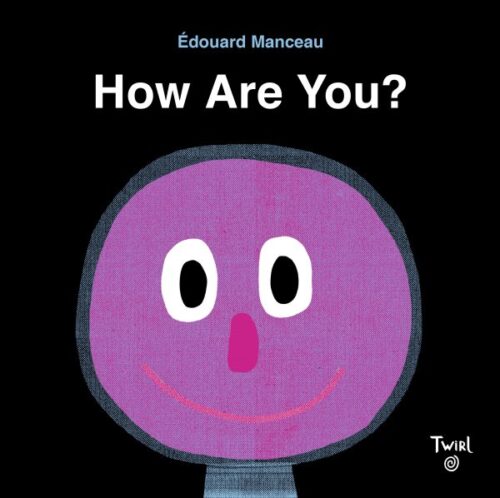
It wasn’t all that long ago that every other quality board book I saw originated in France. Then, as time has gone on, American publishers have stepped up to the plate a little more often. It’s refreshing to see! Still, my heart does skip an extra little beat when I see something as simple and lovely (and FRENCH!) as what Manceau has created here. I love a book about feelings that zeroes in on what a person needs to know. The focus of this book never wavers from a single face, taking up a full page. When the face is asked how it feels, it responds, “Oh, it depends on the day.” There is, I should note, no mouth at this point. Then, as each separate emotion is introduced, the mouth, eyes, nose, and even the color of the face show a wide variety of feelings. Sometimes the mouth will even disappear entirely, leaving everything up to the eyes. I particularly like the ending where the emotions have turned a bit sad and dark and then the character takes a nap and feels much better. A lovely addition to any library.
Illusions in Art: Animals by Chiêu Anh Urban
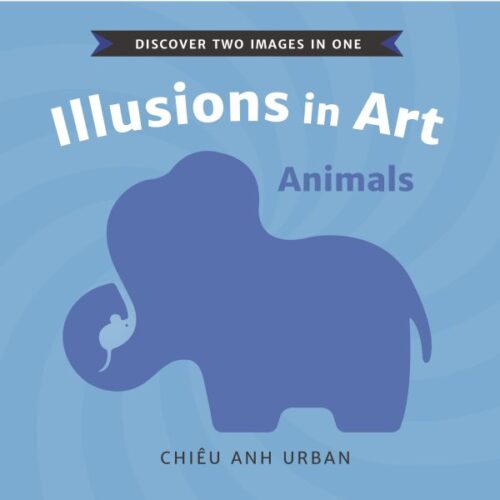
I love clever board books. I particularly love clever board books that would actually be of interest to their intended populations! Ms. Urban’s been creating such books for a while now, but this is her first foray (and certainly one of the first I’ve seen) combining optical illusions and contrasting silhouettes. This may be one of those board books that you could use with a baby and then, years later, keep using with a preschooler. The baby will appreciate the high contrasting colors and the simple identification of the most obvious animals. The preschooler will appreciate finding the second animal hiding within the outlines of the first (find the mouse in the elephant’s trunk on the cover of this book, if you want to see what I mean). This may be the rare board book that can age up as the child ages up. Prepare to blow some burgeoning minds. Be sure to also check out Illusions in Art: Food which came out this past fall.
Ketchup On My Sundae by Nelleke Verhoeff
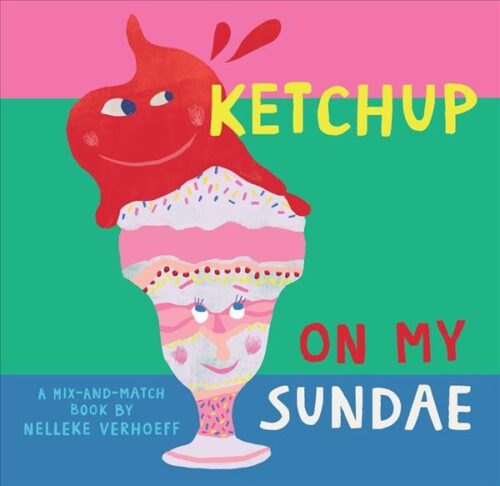
A companion to Verhoeff’s other board books, like this year’s Bruno Builder Bakes Bread (see above). It’s a mix-and-match book (if that is the technical term – I still don’t really know) intended for the preschooler crowd. Why do I say that? Because a kid needs to have at least a basic working knowledge of some of these foods for it to hit home properly. Otherwise you might create a sour cream waffle cone and not incur the proper “ewwwwwww!!”s. The top half of the book includes, well, toppings. “Zesty radish” or “salty feta”. The bottom half is what you’re putting those toppings on. “Pizza” or “Hot Chocolate”. I was pleased with the inclusion of foods beyond the usual, like paella and couscous. There’s some real gross-em-out splendor on display!
Kind Crocodile by Leo Timmers, translated by the élami agency
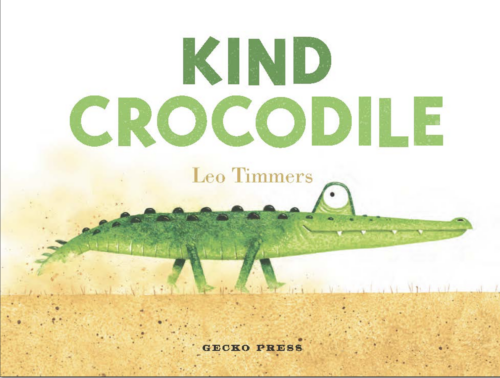
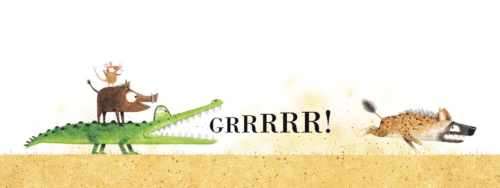
This one’s definitely more on the upper end of the whole board book spectrum, I have to say, straddling both picture books and board books in its wake. Leo Timmers, of course, is the Dutch vunderkind who can do no wrong on the page. The book pretty much establishes right there with this title that this crocodile is of the sweeter variety. Indeed, when the story opens, a plethora of animals come running to him for help, as they escape their natural predators. The crocodile scares each hungry baddy off with an appropriate “GRRRR” even as the animals he saves start to create a kind of stack ala The Bremen Town Musicians on his back. Timmers utilizes a limited number of words and his usual palette that looks both two and three-dimensional at the same time. Not sure how he does this art, but by gum I hope he never stops.
Look Up High! Things That Fly by Victoria Allenby

I’ve never gotten a conclusive yea or nay on whether or not I can count the books in this “Big, Little Concept Books” series as board books or not. While technically their pages do appear to be indestructible on some level (they’re those impossible-to-rip thick plastic ones) and the cover is poofy, is it a “board book” per se? Who cares! What matters is the content inside. In this case, this book is following in the footsteps of some of my absolute favorite books from years past, including Shape Up, Construction Trucks! (which is one of the best shape/construction titles out there, FYI). In this book, prepositions are the name of the game. Now, the #1 preposition book of 2023 is Catside Up, Catside Down by Anna Hrachovec, but as luck would have it, now we have TWO great preposition titles out this year!! The photography? Stellar. Happily, the last image in the book is of a daddy giving his daughter an “airplane” ride of her own. Love those photographs, and those gentle rhymes as well.
Make Tracks: Building Site by Johnny Dyrander
Make Tracks: Cars by Johnny Dyrander


Long ago the great librarian Anne Carroll Moore was confronted with an early edition of Pat the Bunny. She did not approve. To her mind, books for children, even the youngest of children, that incorporated toy-like elements were the bottom of the barrel. “Truck!” she declared (which was an insult). And so books of its sort (interactive books) didn’t appear in libraries for quite a while. It’s a different world today, of course, and as I paged through Make Tracks: Cars and Make Tracks: Building Site I was reminded of Moore’s opinion of such books. I don’t share her opinion, but I do think that the relationship between books and toys is an interesting one. At what point does one morph completely into the other? In this book there are four pages of tracks. In the car book, a round token with a car on it (a regular old boring car, a race car, a sports car, and a taxi) are embedded in this track. A dexterous child can then put their finger on the car and move it around the track, sometimes taking instructions from the book on where to go and what to do. As for the building book, same deal but this time with concrete mixers, dump trucks, and more. There are also helpful diagrams of all the different parts of each car. I admit it. I had a lot of fun with this, and I can imagine that a small child would too. I wonder how long it’ll be until some of these tokens are dug out by persistent kids, but it does help that there are four of them in total. All told, an inventive use of a board book format and not one I’ve ever really seen before.
The Making of Butterflies by Zora Neale Hurston, adapted by Ibram X. Kendi, ill. Kah Yangni
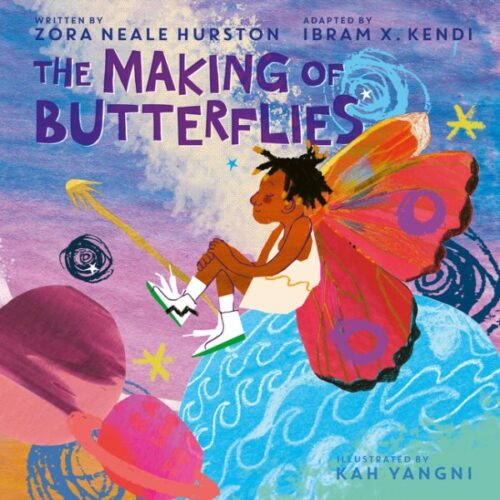
The highlights of this particular list is the wholly original and hitherto unseen, wouldn’t you agree? And wouldn’t you further agree that any board book adapted from a Zora Neale Hurston story fits the bill? Before I say anything else I want to mention how grateful I am to both Mr. Kendi and the good people of Amistad Books for Young Readers for taking the time to include some backmatter in this book. One could be forgiven for wondering, once you’ve finished, where this story originated. Kendi explains that in Mules and Men, Hurston explained that she found this story when she visited a lumber camp in Polk County, Florida. The men there would tell folktales as they worked and sometimes just make them up on the spot. This one arose when a man named Floyd Thomas said that sometimes the Creator isn’t satisfied with what’s created and makes changes. This story is an explanation of that. Yangni’s art is utterly gorgeous, and I adore the sneaker wearing, butterflied Creator on the cover. Kendi has made the choice to retain Hurston’s dialect, so that the first line is, “The Creator wuz all finished and thru makin’ de world,” and it goes on from there. Parents will decide amongst themselves if they feel comfortable reading the book in this matter or if they feel like they should change it as they go.
My First lift-the-flap Nursery Rhymes by Ingela P. Arrhenius

If you know me then you know I love love love nursery rhyme collections. I also notice how rare they are in a given year. For example, in 2023 this is the only collection I saw. Like, at all, at all. It seems a little strange to me that I haven’t seen that many nursery rhyme lift-the-flap books before. I mean, these rhymes are in the public domain already, and with their bouncy rhythms they’re absolutely perfect for very small children. Certainly Child’s Play’s been turning them into individual board books for years. However it happened, we finally have a nice collection of them for young children here in this rather oversized (11.25″ H x 9.25″ W) board book. Big thick pages. Inviting, colorful art by old-hand Arrenhenius (who’s been doing this for years). Admittedly, my favorite kinds of nursery rhyme collections tend to have at least one out-of-left-field inclusion, but this book is all the standards. That’s good for parents who may need to learn some of these songs and rhythms for themselves, of course. If you want the standard rhymes in an appealing format, it’s hard to beat. Extra Bonus: It gives you a QR code you can scan to hear the songs, in case you’re not already familiar with them.
My Hair Is Like the Sun by St. Clair Detrick-Jules, ill. Tabitha Brown

I ask you, one and all, to take a good, long, hard look at this cover. This, my friends, is my perpetual frustration. This cover is not overly complicated and yet it is, in essence, incredibly well made. It’s beautiful, the colors are fantastic, and look at how well the photo itself was exposed in terms of contrast! How is it that we don’t have reams and reams of board books that look like this one? In lieu of that fact, we must be content with what we have, and what we have is a thoroughly charming creation. It’s a celebration of Black hair that compares a variety of styles to natural forces. So St. Clair Detrick-Jules not only wrote the text but took these photos as well and I want to honor the skill that went into this collection. This isn’t some haphazard smattering of children. It’s thought out, skillful, and a beautiful range of hair and skin tones. I’ve seen a lot of children’s books celebrating Black hair, but few board books, and what few I’ve seen tend to be illustrated. There’s something so enormously satisfying about seeing real hair on the page. A magnificent book, I don’t really understand why more publishers haven’t jumped on this bandwagon yet. In any case, this is one of my top board books of the year. Don’t miss out on it! Simply fantastic.
One by Ruth Forman, ill. Katura Gaines
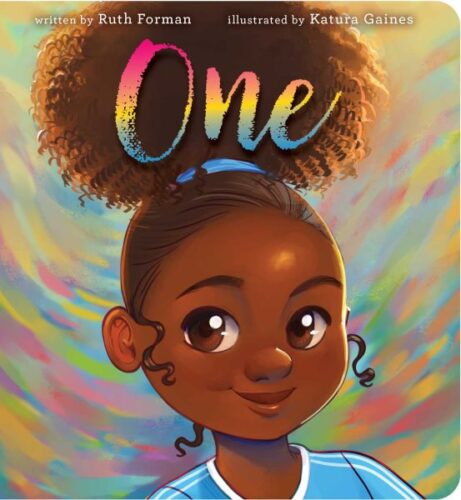
More hair, and in a pretty clever package. So this is a book that’s supposedly just about counting, but has all these little visual clues in the art to get kids interacting and interested throughout the read. First we start out with one girl, her hair in a puff on her head. “… but now we are two.” A second girl comes, and at this point you might notice that she’s gathered her hair into two ponytails. As they’re joined by more and more friends, each subsequent girl has her hair styled in such a way where you can count that number on her head. There might be six braids with the sixth girl, or ten gathered braids into individual buns. We’ve seen a lot of different books about pride in Black hair (see above), but this one’s a bit subtler than the rest. It’s kind of interesting to see this as a board book, since you’re building towards a girl’s soccer team at the end (hence the clincher of an ending, “…we know we are one”) and that’s a bit old for a preschooler. Then again, they do have preschooler soccer “leagues” for three-year-olds these days, so maybe I’m not thinking this one through. Whatever the case, this book is a lot of fun, and a clever counting book concept with a great take on positive self-image. Not bad for a board book!
123 Who Comes Next? by Amy Matsushita-Beal
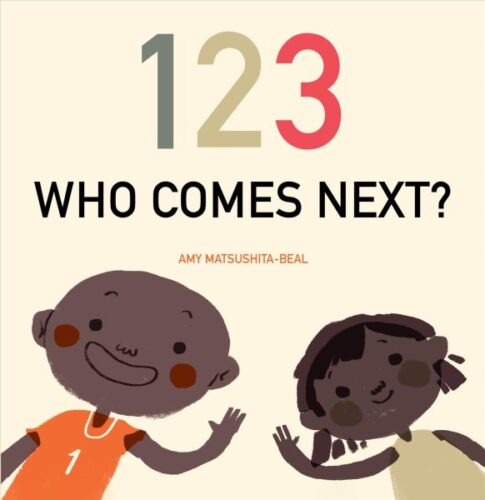
To my mind, the best children’s literature often comes with a little thread of weirdness running through it. Why else should Maurice Sendak be so popular (though, in his case, it was less a “thread” and more a “river” of weirdness). We don’t get a lot of oddities in the board book world and why is that? A sheer lack of guts. No guts no glory, so it is with incredible pleasure that I introduce you to one of my favorites of my year. It’s just a simple counting book. Simple, that is, until it becomes so much more. Mind you it starts off so incredibly naturally. “1 One” is just a boy on the right hand page waving at you. And “2 Two” is an additional girl, also waving. Everything proceeds pretty normally until you get to “5 Five”. That’s when a pig in an olive polo shirt shows up (waving, naturally) and the humans are a bit taken aback. Of course, by the time we get to “10 Ten” they’ll be desperate for the innocence of that first pig, believe me. Strange, delightful, and with art that just pops off the page against that white background, do NOT miss this title! And if you like, you can also get bilingual editions in Spanish and Haitian Creole.
Opposites Are Natural by Kate Riggs, ill. Maria Cristina Pritelli

Imagine you’re a frazzled parent of a very young child (it’s easy if you try). You are, today, at your wit’s end. Things have just been one disaster after another. Now it’s time to read to your little one and you want, no NEED, a book that’s going to soothe every jangled nerve in your cerebellum. By all appearances, this book by Riggs and Pritelli is simply an opposites book, but open that first cover and you are awash in this soothing, green, two-page spread of a spring forest suffused in an early morning mist. Even the words are calming, “In a quiet forest, young trees grow old.” Can’t you just feel yourself start to unclench? Each page is like that. A warm bath of opposites that also, somehow, seem to be saying something much bigger than what’s on the page. “Thin branches thicken.” “Bright fruits darken.” By the time you’re done your heartbeat has slowed a little and maybe some of that calm has even, impossibly, been passed on to your little one. A meditative, in the best sense of the term, book.
Our Underwater World: A First Dive Into Oceans, Lakes, and Rivers by Sue Lowell Gallion, ill. Lisk Feng
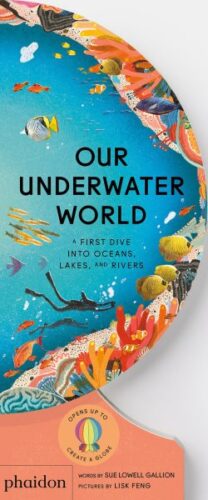
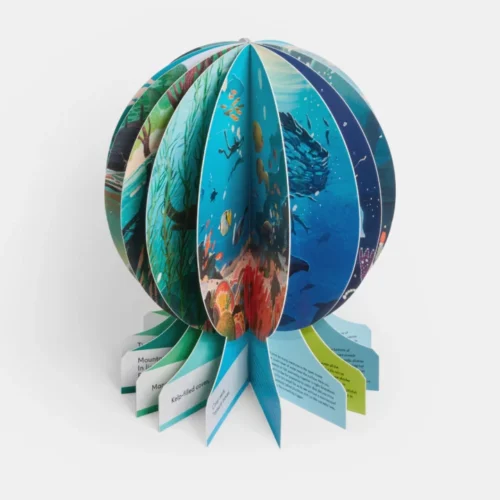
I’d be the first to tell you that I’m not a fan of board books that contain large swaths of text. It always seems to me that the authors really wanted to write a picture book but were coerced somewhere along the way into stuffing their titles into a board book format. Inventiveness, however, can go a long way towards alleviating such worries. This Phaidon creation at first appears to be more of the same, but there is method to its madness. First of all, you’ll note the odd shape of the book. If you were to open it up full and allow the front cover to touch the back, you’d find that there’s a small magnet in the book that allows it to stand open and upright perfectly. All well and good, it’s clearly a neat trick, but how about the text and art? The text, as it happens, is for the most part completely appropriate for a preschooler. In these pages it shows what it looks like under the water of rivers ponds, streams, coves, and more. On the left-hand side of the page is the younger kid-friendly text. On the right hand side is a longer text if you’ve a kid particularly interested in the topic (or if an older sibling or cousin is reading it to them and gets swept up themselves). Books of this sort give readers the freedom to determine how best to read the books for themselves. The fact that it also looks utterly original is really just the icing on the cake.
Puddle Song by Laura Purdie Salas, ill. Monique Felix
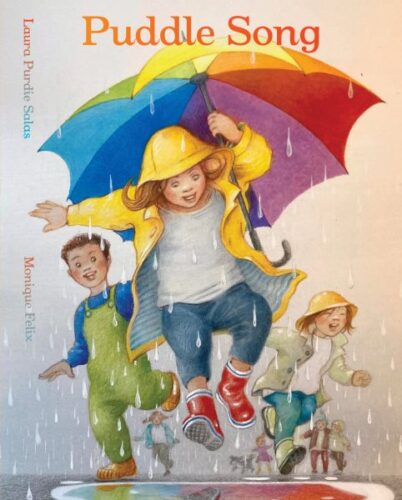
Had a co-worker of mine not read this book aloud to me, I don’t know that I would have loved it as much as I now do. Salas really is a poet and that skill has been brought to the fore in this title. Listen to this:
“Bring me your leaves, you wind-rattled trees.”
It just gives me the shivers (in a good way!”. Ditto this next one:
“in my silver skin rippling light in the breeze.”
Dang. Preschoolers never had it so good.
When Stars Arise by E.G. Alaraj, ill. Martyna Czub
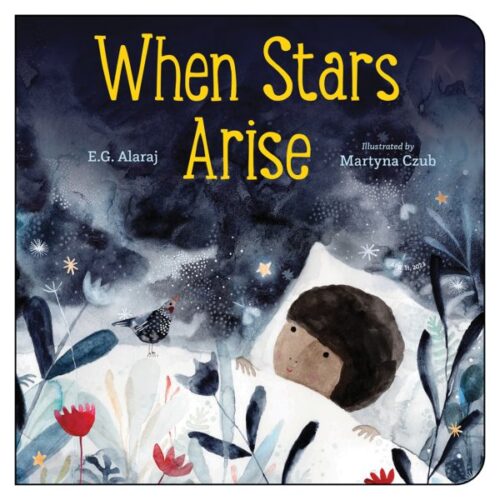
Cozy board book fare! How pleasant. It’s the sign of a good board book when the adult doing the reading finds themself to be just as pleasantly lulled by the repeating text as the child. Some repetition can feel… well… repetitive. Here, Alaraj’s phrasing “Don’t close your eyes” serves as both a challenge and an impossible to obey command. The rhymes play fair from start to finish as well. Even the most nervous parent won’t have difficulty with these cadences. At first I found Martyna Czub’s art a bit muted and blotchy, but as the book proceeds it unfolds to become quite beautiful. A book I wasn’t so sure of at the start but that really won me over.
Where’s Randolph? by Marianna Coppo

First off, 100 points for this cover. Look at it and tell me that you are not at least just a bit charmed. I am charmed. Are you charmed? The entire premise is about a little bear who is rather terrible at hide-and-seek. The reader is encouraged to give it a go and try to find Randolph (“bear with him”). The lift-the-flap element comes in as you see bits and parts of Randolph sticking out from behind curtains, plants (like the one on the cover), lamps, etc. One twist that I particularly liked comes at the end when the reader is encouraged to hide because now Randolph is going to look for YOU! A reader could then actually hide and the parent reading the book could find them with the page of Randolph saying, “I found you!” so that it really feels like he’s playing along. A clever twist on the lift-the-flap format with excellent interactive possibilities.
Whose Prints? by Kari Allen, ill. Kim Smith

There are lots of tracks in the freshly fallen snow, but who made those tracks? See if you can identify them in this bouncy, rhythmic, tactile and early introduction for the youngest of readers. I see a lot of science-y board books in a given year and they always seem to make the same mistakes. Either the text is too wordy or there aren’t any interactive elements or the facts are a bit squidgey. And I sympathize, because it must be very difficult making informational books for our youngest of readers. What I like so very much about Whose Prints?, though, is that it manages to maintain that simple text and simple concept (identifying different animal tracks in the snow) while also giving little kids a tactile, physical thing to do (the tracks are all die-cuts in the page). It’s fun, simple, and allows the parent to make fun sounds like, “Slink, slink, slink,” or “Hop, Hop, Bounce, Burrow,” as well. A winner!
2023 Board Book Reprints
Bee-Bim Bop! by Linda Sue Park, ill. Ho Baek Lee

How is it even possible that Linda Sue Park’s contemporary classic hasn’t been turned into a board book before now? It’s a scandal! An outrage! A great wrong righted, though. Few food books (say that ten times fast) are as bouncy, rhythmic, and downright fun as this title. Librarians know. We’ve been performing it in our baby storytimes for years anyway. Now, at least, we have something we can send home with the parents and not have to worry too much that overeager little hands will rend it asunder. This isn’t just a great board book adaptation. It’s one that’s been a long time coming. Ah, to have a baby again . . .
Big Sister, Little Sister by LeUyen Pham

Okay, it took me a little while to perfectly define the best possible way to use this board book, but I think I’ve nailed it. It’s a tiny bit wordy for the board book format, but it is also LeUyen Pham and who wouldn’t want to see this 2005 title come to the attention of the public again? Not all picture book to board book transitions go smoothly and at first I was uncertain. But then (and there is where the brilliance came in) I realized that this is the book that an older sister could read to their little sister. So it’s perfect! Get a canny second grader with a baby sis and have them read it to them. Then you’ve got bonding going on AND Pham’s ridiculously adorable art to top it all off. Oh, it could work.
Ducks! by Deborah Underwood, ill. T.L. McBeth
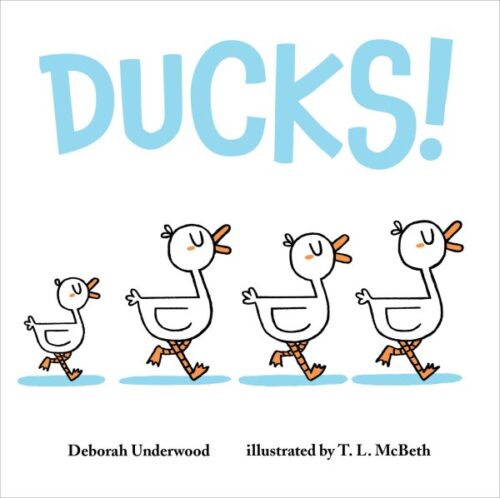
I’ve an odd affection for picture books that manage to make the transition to board book formats with as great an ease as this little number. The story has such a small number of words, but they do a great job in conveying a big plot. One little duck has been separated from his family. As he searches for them, he encounters misleading sounds and sights, all vaguely ducklike, none of them his family. The book was originally released as a picture book back in 2020 (not the grandest year of publishing on record) but seems to have found a better home in this, its newest format. Here, the simplicity of the lines and the simplicity of the text make it feel like it was always meant to be a board book from day one. Plus, it includes at least one instance of a very Daffy Duck-esque facial expression on a duck as he stares at the reader in a kind of can-you-believe-what-I-have-to-deal-with sort of way. Ducky!
Marta! Big & Small by Jen Arena, ill. Angela Dominguez
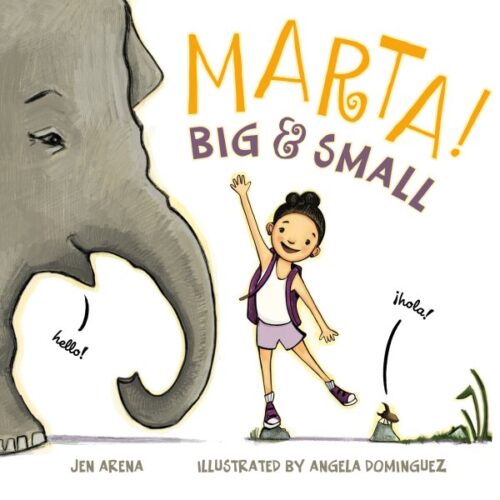
I remember when Marta first hit the picture book scene. It was a nice book, if a bit slight. Then again, we librarians are constantly on the hunt for picture books for our just-out-of-board-book readers. And with its gentle opposites and Spanish terms, this certainly fit the bill. Even so, I commend the folks at Roaring Brook Press for understanding that maybe in her next life Marta was destined to join the board book contingent. With its pure white backgrounds, the book feels like it was meant for this format from the beginning. I would love to someday sit down with a designer and figure out how one decides the best way to scrunch a picture book into such a little package. Here, you do get a bit of a sense of animals getting cut off a little on the edges of the page, but it’s not intrusive or even particularly noticeable. A successful adaptation all round!
Welcome to Chinatown by William Low

You know, for me William Low was the illustrator who taught me what digital illustration was capable of, long before the current glorious Renaissance we find ourselves in today. He was the one who could create the earliest Impressionist takes on cityscapes and city scenes. This book originally came out all the way back in 1997 but has it aged in the intervening 26 years? I tell you one and all that it has not. Now a good picture book to board book transition is going to have to rely heavily on having a relatively simple text, and simple text this had. I don’t have the original in front of me to say if it’s the same as the picture book (I suspect it was pared down a bit) but that is a-okay with me. It’s great. It’s bilingual. It’s worth checking out.
While You Sleep by Jennifer Maruno, ill. Miki Sato

Gotta give Pajama Press some credit on this one. Not only did they turn a picture book with cool cut art into a board book, seemingly effortlessly, but they added a touch of glitter on the cover (the kind that won’t come off when a kid rubs it a couple hundred times), and on the back cover is a little “Parental Guide”. What kind of “Parental Guide”, you ask? Well, they have identified four distinct things to know about the book. It’s a bedtime book, it has some science and nature (sooooorta), it has rhyme and rhythm, and it’s for family reading between the ages of 1-3. Smart little inclusion, that. Get parents addicted to such guides and they’ll end up looking for your publisher’s books over and over again. In the meantime, it’s a nice book Maruno wrote here. Definitely a sleepytime/getting kids ready for bed book, but it’s Sato’s art that’s the star of the show. The depth she can get with cut paper, and the sheer range of different kinds of materials on show is just kinda cool. It’s dreamlike and silly and ultimately very comforting.
You Are New by Lucy Knisley

Truth be told I’ll pretty much eat up whatever it is that Lucy Knisley’s dishing out. Back in 2019 she produced this title as a picture book, and it was pretty good but the mere fact that it was a picture book and not a board book from the start made it seem as if it were better suited for adults at baby showers rather than actual honest-to-goodness babies. Now that’s been corrected with this board book adaptation and with the ample white space and nice big fonts, the transition appears to be seamless. Sometimes you read a board book adaptation and immediately notice the parts that just didn’t make the crossover correctly. Not so here! And in a board book edition I noticed details that I’d missed before, like a cameo from Lucy’s old cat Linney. A pretty good book for some pretty young readers.
Hope you enjoyed these! Here are the lists you can expect for the rest of this month:
December 1 – Great Board Books
December 2 – Picture Book Readaloud
December 3 – Simple Picture Book Texts
December 4 – Transcendent Holiday Picture Books
December 5 – Rhyming Picture Books
December 6 – Funny Picture Books
December 7 – CaldeNotts
December 8 – Picture Book Reprints
December 9 – Math Books for Kids
December 10 – Gross Books
December 11 – Books with a Message
December 12 – Fabulous Photography
December 13 – Translated Picture Books
December 14 – Fairy Tales / Folktales / Religious Tales
December 15 – Wordless Picture Books
December 16 – Poetry Books
December 17 – Unconventional Children’s Books
December 18 – Easy Books & Early Chapter Books
December 19 – Older Funny Books
December 20 – Science Fiction Books
December 21 – Fantasy Books
December 22 – Comics & Graphic Novels
December 23 – Informational Fiction
December 24 – American History
December 25 – Science & Nature Books
December 26 – Unique Biographies
December 27 – Nonfiction Picture Books
December 28 – Nonfiction Books for Older Readers
December 29 – Audiobooks for Kids
December 30 – Middle Grade Novels
December 31 – Picture Books
Filed under: 31 Days 31 Lists, Best Books, Best Books of 2023
About Betsy Bird
Betsy Bird is currently the Collection Development Manager of the Evanston Public Library system and a former Materials Specialist for New York Public Library. She has served on Newbery, written for Horn Book, and has done other lovely little things that she'd love to tell you about but that she's sure you'd find more interesting to hear of in person. Her opinions are her own and do not reflect those of EPL, SLJ, or any of the other acronyms you might be able to name. Follow her on Twitter: @fuseeight.
ADVERTISEMENT
ADVERTISEMENT
SLJ Blog Network
Name That LEGO Book Cover! (#53)
K is in Trouble | Review
Fighting Public School Book Bans with the Civil Rights Act
Take Five: Middle Grade Anthologies and Short Story Collections
ADVERTISEMENT








Gotta love December – we kidlit fans await the start of 31 Days, 31 Lists and, at last, it’s here!
Does anyone have thoughts on how the felt flaps in lift the flap books hold up compared to paper? Or how to make accordion style books work in the collection (surviving circ)?
Oh! Oh! Oh! I have thoughts!
I can’t attest for these particular books, but felt flaps were around when my own kids were itty bitties and, at least with the books I lent them, they held up well. As for accordion style books, that’s an excellent question. The book Reading Time, as seen on this list, has a little tab that allows the book to stay in one piece (always assuming that the tab itself stays intact). And as I recall the Tana Hoban book Black and White always stayed together surprisingly well. Maybe it’s a case-by-case basis? It’s a good question.
I have found that the felt flaps hold up better than paper ones at the library. They may get a little grungy, but that mean it is time to weed.
As for accordion fold books, play close attention to how they close (pun intended) and fold. Ones that stay closed or fold around themselves work best in the library. Make sure your shelvers are familiar with format so they don’t think a book has fallen apart!
Thank you! It’s amazing what you provide here, a mini-education really. I’m happy to be a student.
Oh my goodness, thank you for including Copy That, Copy Cat! I’m a longtime reader and I’ve always hoped I’d have a book on one of your lists someday—thank you for making that dream come true!
Thanks for always giving board books their due! I always feel vindicated when you call out here some of the same titles as I do in my HB board book roundups (https://www.hbook.com/story/baby-testing-board-books-a-report-and-a-roundup-from-a-margaret-wise-brown-board-book-award-jury-member) or the folks at the Carnegie Library in Pittsburgh or Bank Street honor the same titles in their Best Books for Babies lists. We need more board book inclusion on best of the year lists!
And thanks for calling out some PB titles that crossed over BB this year. I do a deep dive on that topic in my 2nd roundup for 2023 in the Horn Book Jan/Feb 2024 issue. (Please forgive the shameless plugging).
Oh yes! Thank you for mentioning this! Any book in particular that you wish that I’d included?
Gonna look forward to your Horn Book piece.
You do a wonderful job! The only book that I didn’t see that I’ve been really excited for a board book reprint of is Lucy Cousins’ Jazzy in the Jungle. The shaped pages should have always been in board. I’m glad that publishers aren’t afraid to go straight to board and seem to be embracing the format.
Wonderful, as always. Two more board books that I loved this year:
– ¡1, 2, 3 Merengue!: English-Spanish Instruments & Sounds Book by Delia Ruis, illustrated by Graziela Andrade (part of a series–I like them all)
– If Mama Sings by Laura Wittner, illustrated by Maricel Clark
I love additional suggestions! Thank you!
This past summer my golden retriever Therapy Dog and I were invited to share a weekly story time event for preschoolers at a small public library in a coastal Maine town. Spending time with very young children helped me to really appreciate the value of board books. Appropriate, simple word choice and bright beautiful illustration in a package that almost invites rough handling, drooling, chewing, etc. So perfect for introducing books and reading. And a perfect topic for Day #1 and List #1.